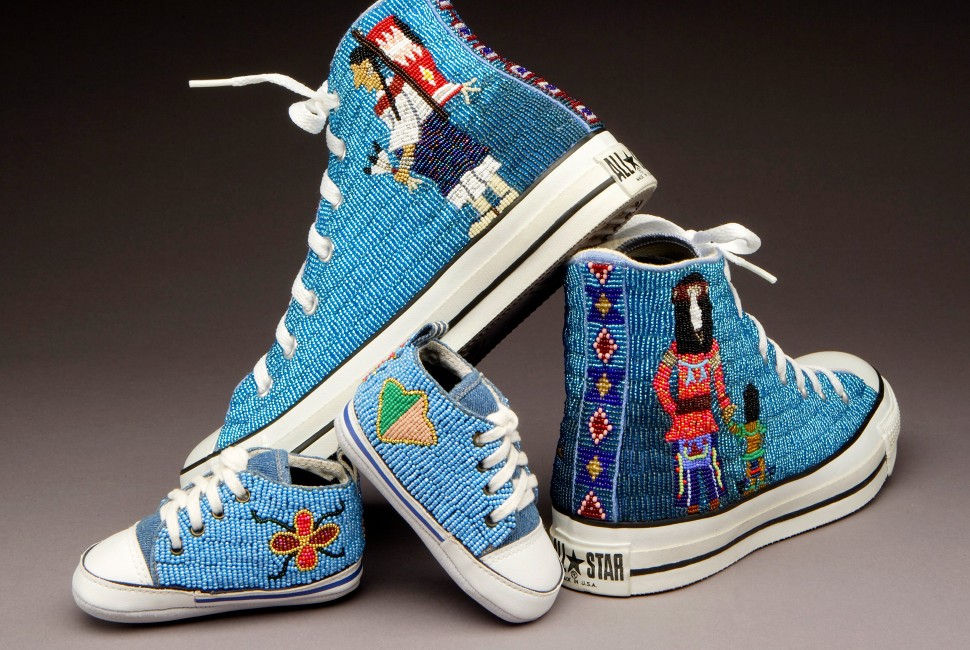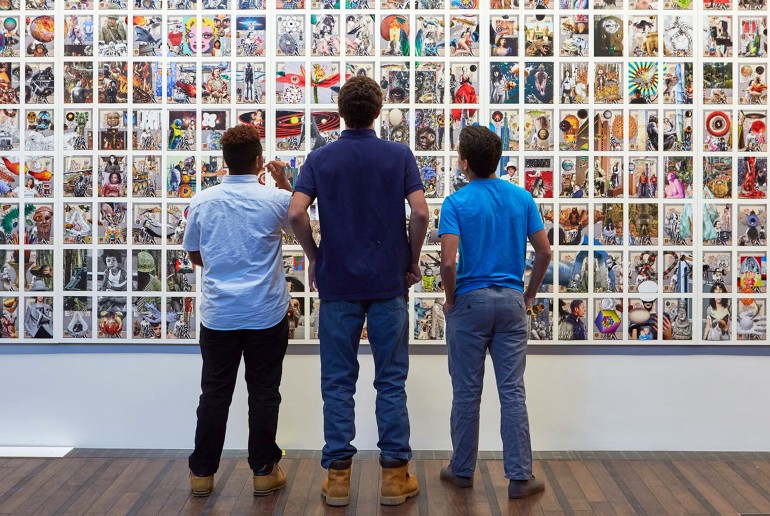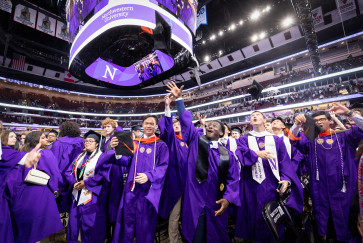Chicagoland — called Zhegagoynak in Potawatomi — is a longstanding cultural and economic hub for people from many Indigenous nations. In fact, the city of Chicago has the third-largest urban Indigenous population in the U.S.
Despite this rich history, these voices have often been excluded from Chicago’s art histories.
Now, The Block Museum of Art at Northwestern will celebrate the region’s Indigenous creativity with a major exhibition, “Woven Being: Art for Zhegagoynak/Chicagoland.”
Because Indigenous experiences are often excluded
The exhibit, which opens Jan. 25 and runs through July 13, is a collaborative effort by four artists with connections to Zhegagoynak: Andrea Carlson (Grand Portage Ojibwe/European descent); Kelly Church (Match-E-Be-Nash-She-Wish Tribe of Pottawatomi/Ottawa); Nora Moore Lloyd (Lac Courte Oreilles Band of Lake Superior Ojibwe); and Jason Wesaw (Pokagon Band of Potawatomi). It explores intersecting influences that continue to shape Indigenous creative practices in the region and beyond.
We want people to walk away recognizing that there’s a lot more to experience...”
Exhibition co-curator
Chicagoland is the traditional homeland of the people of the Council of Three Fires — the Ojibwe, Potawatomi and Odawa — as well as the Menominee, Miami, Ho-Chunk, Sac, Fox, Kickapoo and Illinois nations. It has been a longstanding cultural and economic hub for Indigenous peoples and continues to be today. People from many Indigenous nations call the region home, and the city of Chicago has the third-largest urban Indigenous population in the U.S.
Despite long and enduring ties to the area, the richness of Indigenous experiences and contributions are often excluded from Chicago’s art histories. “Woven Being” counters this by focusing on the ideas, choices and voices of Indigenous artists.
“The Block was interested in exploring the question: ‘How does one’s understanding of Chicago change when seen through Indigenous perspectives?’” said Jordan Poorman Cocker (Kiowa), Terra Foundation guest co-curator of the exhibition and curator of Indigenous art at the Crystal Bridges Museum of American Art. “This exhibition helps shift views about the place Chicagoans call home by revealing Indigenous stories that have been erased or omitted from mainstream narratives.”
“Just as a black ash basket is given form through the interweaving of many splints, ‘Woven Being’ was developed through an in-depth collaboration with and between these artists and The Block’s project team,” Cocker said.
Casting a wide net for inspiration
This artist-centered approach has resulted in a distinctive exhibition where the artists have shaped a context for their work amid works by other artists of their choosing.
“The assignment for us, the organizing artists, was to choose art and artists who’ve inspired our own works. The resulting exhibition locates our chosen artists and artworks as a network of influence that happens to culminate in and around Chicago,” Andrea Carlson said. “‘Woven Being’ has tangents, unexpected artists who aren’t even Native, and diverse materiality and forms because artists cast a wide net when it comes to where we draw inspiration.”
Together, the artworks highlight the shared aesthetics, materials, values, communities and kinship of the artists. The themes of land and waterways, kinship with plants and animals and Indigenous concepts of time likewise connect the exhibition’s artworks and stories.
“These perspectives are central to understanding Chicago’s specific cultural landscape. While our focus is on Indigenous artists here, we are also recognizing how they are interconnected with art and artists across the entirety of North America,” said Kathleen Bickford Berzock, exhibition co-curator and Block associate director of curatorial affairs. “‘Woven Being’ is just one of many stories that could be told about Indigenous art in the Chicagoland region. We want people to walk away recognizing that there’s a lot more to experience and many ways to do that.”
“The artists and exhibition team have been thoughtful about framing ‘Woven Being’ as a gift: art for Zhegagoynak,” said Janet Dees, co-curator and former Steven and Lisa Munster Tananbaum Curator of Modern and Contemporary Art at The Block. “The selected art is a gift to the land and to our audiences, reflecting the concept of reciprocity that is central to many Indigenous communities.”



